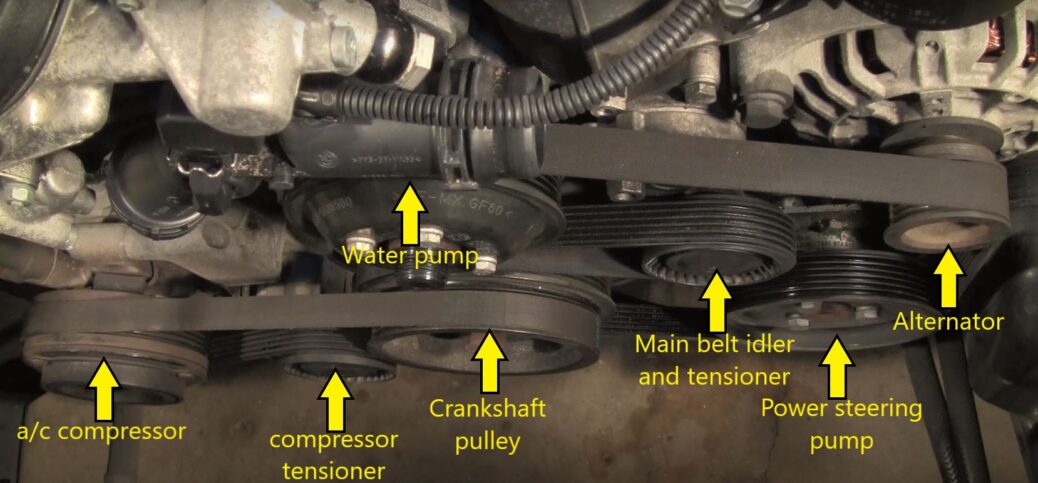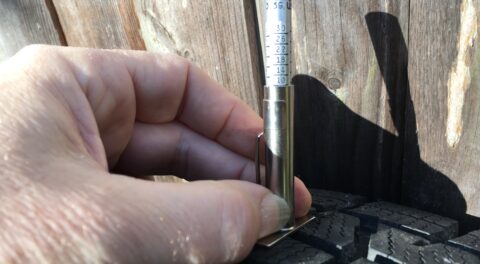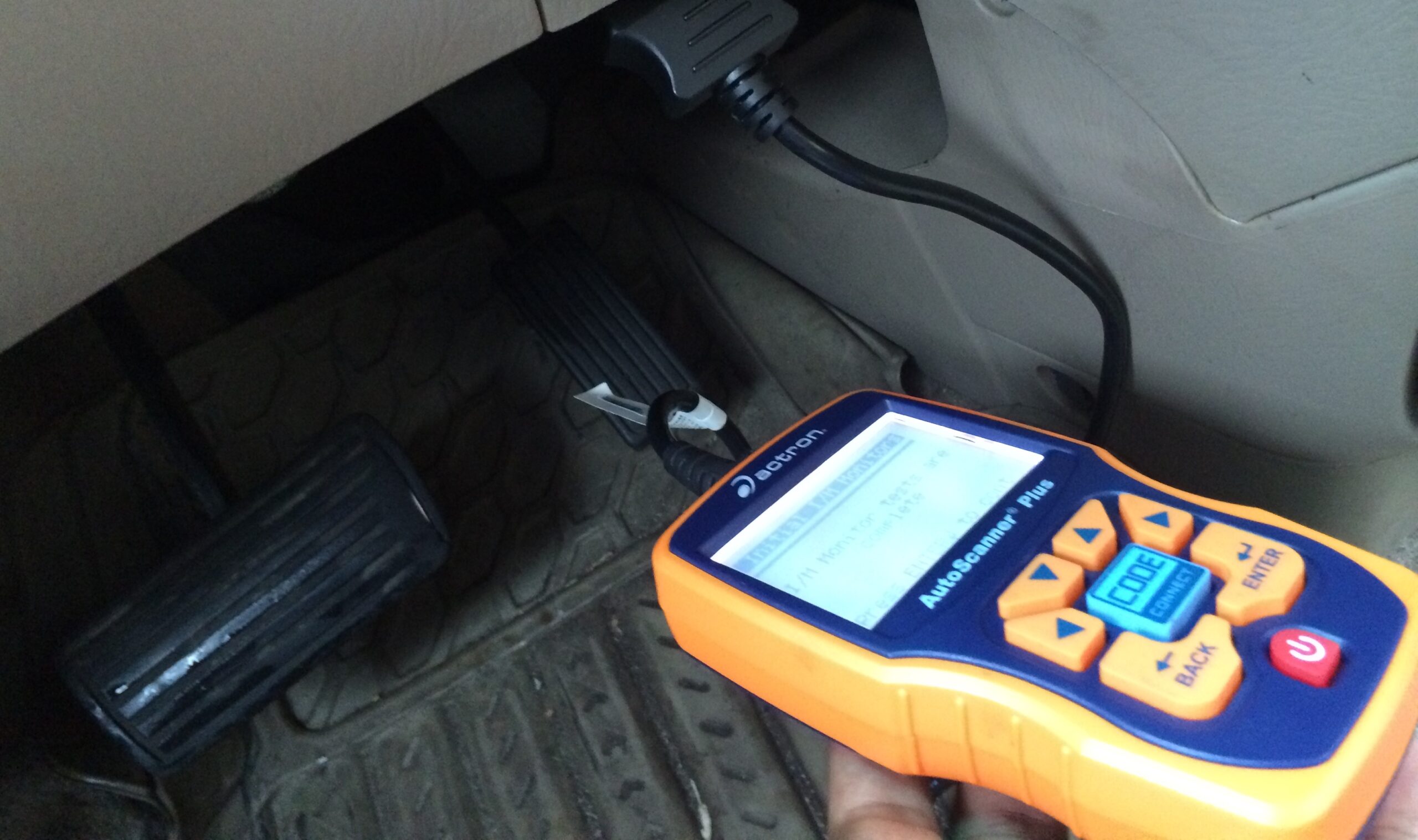Hey, this is the kind of clickbait title that shows up in my feed all the time, only it’s usually about weight loss or toenail fungus. I thought I’d try it here and see if it increases the number of eyeballs.
In sorting out my recently-acquired 183,000-mile 2008 Nissan Armada, I had to deal with a noise coming from somewhere in the mess-o-pulleys driven by the serpentine belt. I’ve written about serpentine belts before, most recently when the alternator in my daily-driver 2003 E39 530i died. In that piece, revived the charging system by replacing the voltage regulator, which I did in situ without removing the alternator, so I spared myself having to go full-on mano a mano with the serpentine belt and tensioner(s).
Serpentine belts are useful in that their automatic belt tensioners eliminate the need to perform the routine belt-tightening maintenance required in a vintage car (loosening the nut and bolt on the tension track, manually rotating the alternator on its pivot bolt to tension the belt, then tightening the bolt). And having a single belt that spins all the engine accessories does simplify things somewhat (though my E39, M Coupe, and Z3 have two serpentine belts as pictured above, with a separate belt and tensioner for the a/c compressor).
But really, serpentine belts are kind of a pain. The belt tensioner has a spring or hydraulic-driven pulley that leans against the belt. There may also be a separate idler pulley that helps the belt do its serpent-like snaking through the pulley-laden components. And, yes, that makes it so you never need to adjust the belt tension. But the tensioner and idler pulleys spin on bearings, and the bearings eventually go bad, requiring replacement. That requires de-tensioning the belt, which in and of itself is more of a pain than it should be; it generally requires a look-up on an enthusiast forum to see exactly how to do it. If you look straight down at the engine on any post-OBD-II BMW, you can barely see the belt, as the engine components in modern cars are tightly-packed, the belt is hidden below the air filter housing, and is often obscured by the fan shroud as well. And even if you’re looking at a belt routing diagram, getting the new belt correctly threaded over the fan and through the pulleys is often confusing, as the loops that are inside versus outside the fan are often non-intuitive. Taken together, replacing a serpentine belt by the side of the road is waaaay more difficult than swapping an old-school V-profile “fan belt” that spins the water pump and alternator on a vintage car.
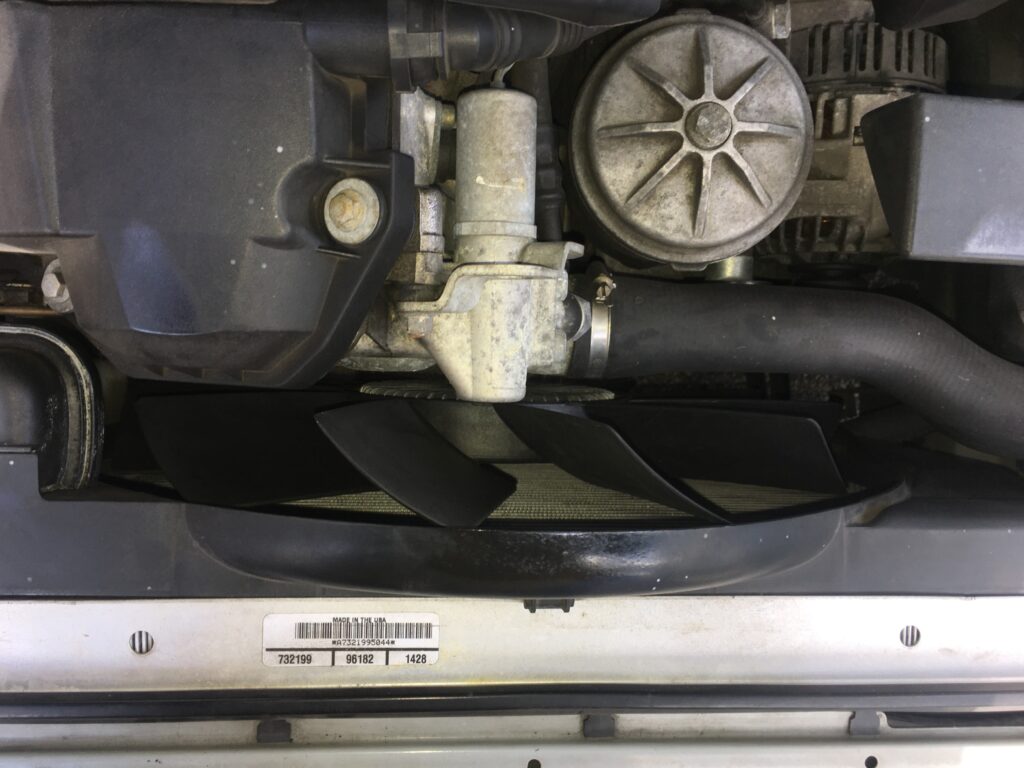
Let’s play “find the belt” on my M Coupe. I lose.
Here’s the one weird trick: If the belt itself is intact but something is making noise in the belt train (as was the case with the Armada), and you’re trying to figure out what it is, you can release the tension on the belt, carefully move it off one component at a time so you don’t lose its path, then spin that pulley to listen for noise and grab the pulley and wiggle it to check for play. I just did this in the Armada and found that the culprit was the pulley on the tensioner itself—it was loose and generating a steely-ringing sound. Everything else—the idler pulley, fan pulley, water pump, power steering pump, and a/c compressor—waas snug and quiet. You can also use a mechanic’s stethoscope to isolate the source of noise, but rumbles tend to travel. If a pulley/bearing/shaft is loose and making noise even at hand-spun speed, you know it’s bad.
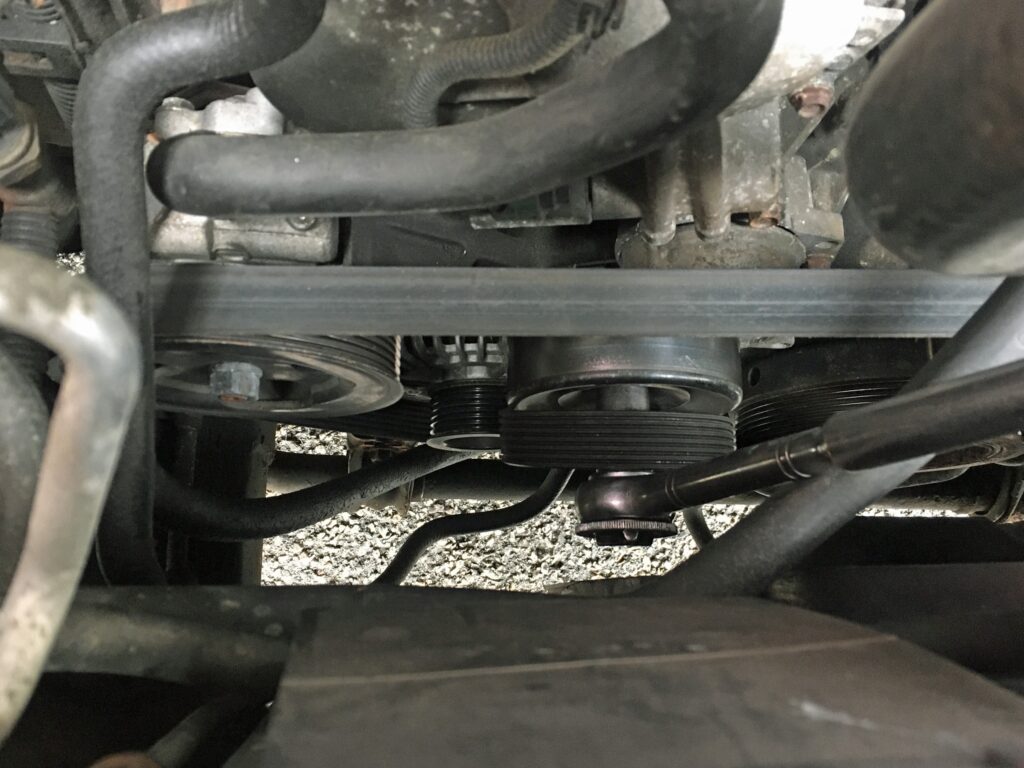
The tension released from the Armada’s serpentine belt, allowing its pulley to be spun.
As I did this, it rang a bell. I did the same thing with the E39 530i when the alternator died. Even though I was able to replace the voltage regulator with the alternator in place, I still needed to make sure that the alternator’s bearings were okay, so I released the tension on the belt and flopped it over the alternator pulley so I could do just what I described above with the Armada—spin it and shake it side-to-side to check for play. It was fine, so the alternator itself stayed put. I never needed to pull it out of the car.
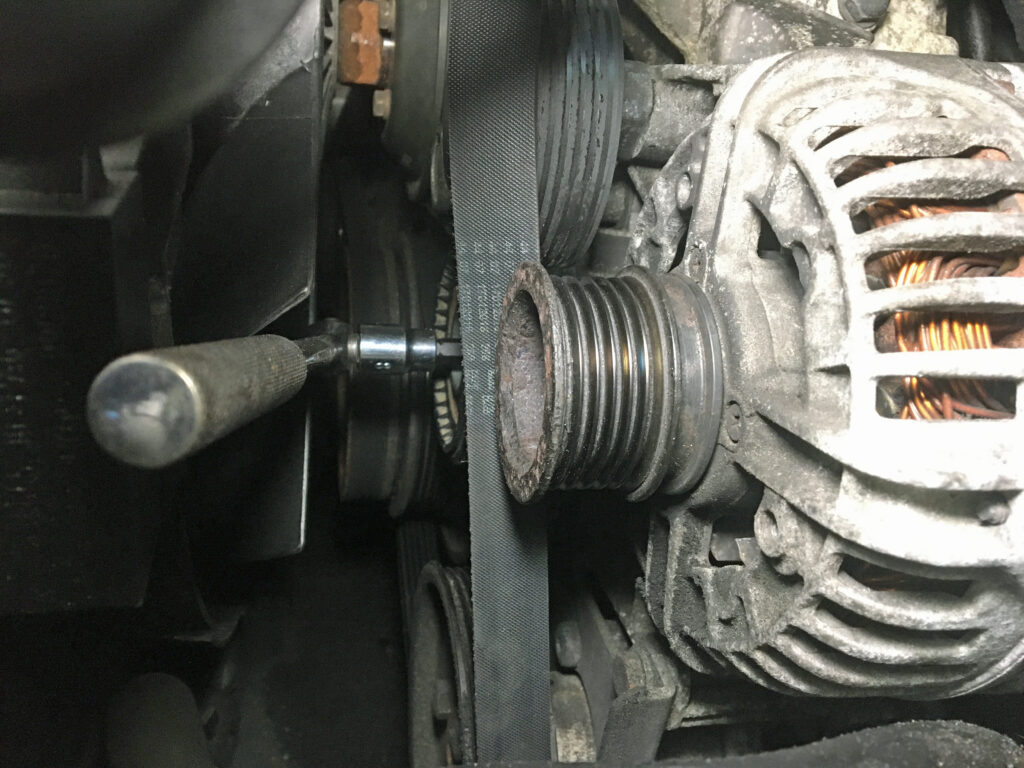
The Allen key bit on a small breaker bar positioned to rotate the E39’s tensioner so the belt could be pulled off.
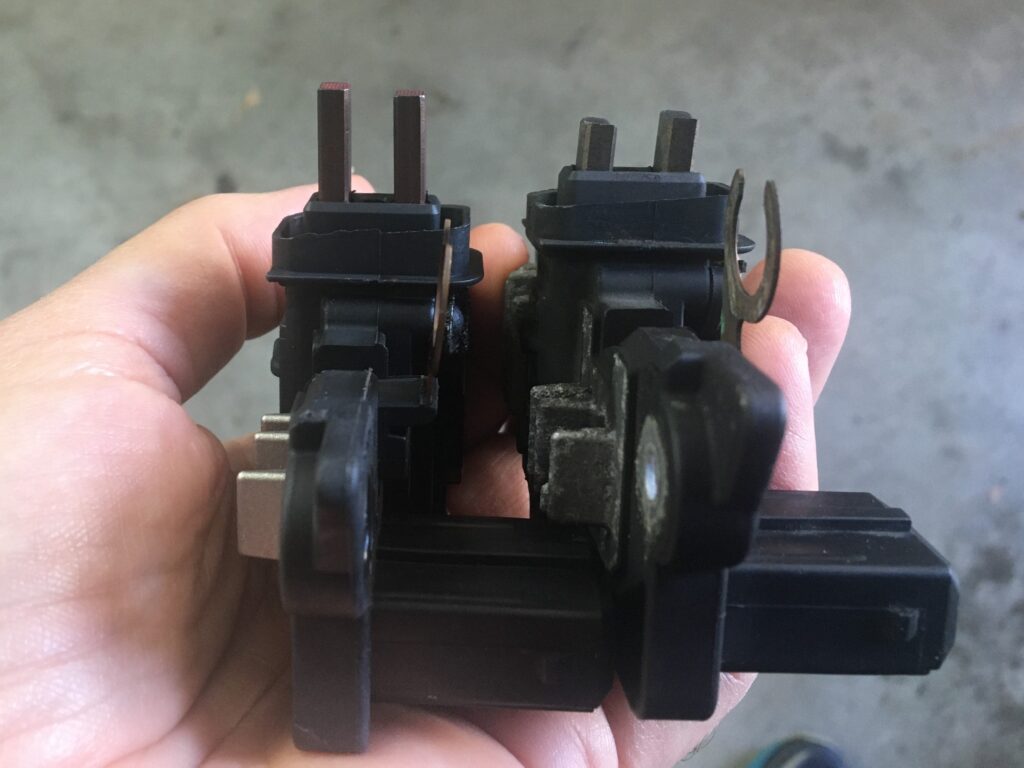
The brushes in the 530i’s new and old voltage regulator.
So, if something in the front of your engine is making noise, and it varies with engine rpm, it’s likely something driven by the serpentine belt. Try this one weird trick to isolate which component it is.
Stay tuned for next week’s story: Getting rid of excess pounds and toenail fungus!
—Rob Siegel
____________________________________
Rob’s newest book, The Best of The Hack Mechanic, is available here on Amazon, as are his seven other books. Signed copies can be ordered directly from Rob here.

